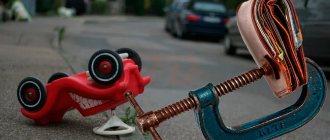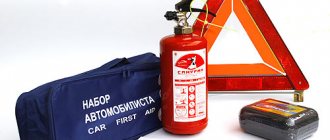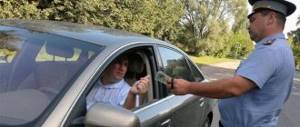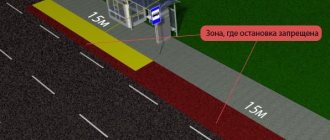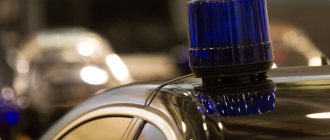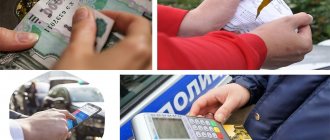Types of liability for road accidents
According to the Legislation, the culprit faces punishment for an accident in the form of:
1, Civil liability . It is also material, which is compensated by the culprit to the victim in any case. This is due to the fact that material losses during any road accident are inevitable, and here we can mention both material damage and moral and physical damage. Additionally, other compensation may be paid in favor of the victim, related, for example, to the lost earnings of the injured party.
2. Administrative responsibility . It is awarded to the culprit of an accident if the victims received only minor injuries, but severe injuries or death were avoided. For this type of liability, there are several types of punishment:
- deprivation of a driver's license for up to 3 years;
- administrative arrest for up to 15 days;
- community service up to 200 hours;
- administrative fine - the amount depends on the type of violation.
3. Criminal liability . It is used in cases where the actions of the person responsible for the accident resulted in severe bodily injury to the victim or death. For such situations, severe methods of punishment are used:
- forced labor for up to 5 years;
- restriction of freedom for up to 3 years - restriction of movement and freedom in certain actions;
- imprisonment for up to 9 years - imprisonment;
- deprivation of rights for up to 3 years.
Features of application:
- Criminal and administrative penalties are strictly individual and only apply to the person responsible for the accident.
- Civil liability applies to all persons. This condition applies in cases where the car was transferred to the person responsible for the accident by proxy or is owned by a legal entity.
The culprit can be punished for an accident with either only civil or combined liability.
Evading a fine
As with any other fine, you can justify yourself from unsafe driving
. It is worth remembering that an appeal must be started no later than 10 days from the date the accusation was recorded.
Due to the fact that the interpretation of the law is still quite “raw”, you can drop the charges quite easily, but only if the representatives of the order, in your opinion, do not have enough evidence, and the witnesses cannot confirm it.
Expert opinion
Stepanov Vladislav Vasilievich
Practitioner lawyer with 10 years of experience. Specializes in the field of civil law. Member of the Bar Association.
In any case, if you think you are right, defend your position by going to court. Lawyers who are well acquainted with all the nuances of the law and will certainly help you will help you win the process.
Administrative punishment for the culprit for actions in an accident
According to the Code of Administrative Offences, additional penalties are applied to the culprit of a traffic accident; for behavior after an accident, some of the most severe are:
- fled the scene - administrative arrest for 15 days or deprivation of rights from 12 to 18 months;
- giving a bribe to a traffic police officer - from a fine of 15-30 times the bribe received to a fine of 70 times the bribe received and imprisonment for 7-12 years;
- violation of the rules of leaving a vehicle at the scene of an accident without changes until the arrival of a traffic police officer - an administrative fine of 1000 rubles;
- failure to provide first aid to victims - from a fine of less than 40 thousand rubles to imprisonment for up to 1 year;
- committing an accident while under the influence of alcohol, psychotropic or drugs is punishable by a fine of up to 30,000 rubles and deprivation of a driver’s license for 2 years.
No casualties
When there are no casualties in the accident, and the drivers escape with a “slight fright,” the situation is resolved very simply. An inspector called to the scene of an accident will try to remove the vehicle from the roadway, not always filling out the documents correctly. First of all, don't lose your composure. Panic will not help here.
When an accident without injuries is registered with the participation of a traffic police inspector, it is necessary to:
- activate the car alarm,
- install an emergency sign no closer than 15 meters from the accident site,
- do not leave the scene of the accident,
- do not clean up broken pieces or fallen objects,
- contact the state traffic police, report the incident,
- contact the insurance company, notify it about the accident,
- record all damage and the location of the accident on camera,
- draw up an accident diagram
- clear the roadway,
- record the information of witnesses and participants in the accident.
The arriving inspector will draw up an accident report based on the information provided. A diagram of the accident, a certificate describing the damage, witness statements and data from a video camera are attached to it. When one of the participants in the accident is not sure of the cause of the collision, he should not go into the smallest details when describing what happened to the inspector. Experts themselves will determine the cause and culprit of the accident.
IMPORTANT !!! You should not sign an uncompleted protocol or incompletely completed documents. Otherwise, such a careless driver may turn from the victim to the culprit of the accident.
After the protocol is drawn up, a copy of it is given to the guilty party against signature. If desired, the injured party may also obtain a copy.
This gives:
- decision to refuse to initiate proceedings,
- resolution to impose an administrative penalty.
In the case of an “amicable” resolution of controversial issues, the participation of a State Traffic Inspectorate employee is not required. If the amount of damage is objectively small, you can settle accounts with the injured party on the spot, taking a receipt for receipt of money and a certificate of no claims. When only 2 parties are involved in an accident, it is possible to draw up a European protocol, thanks to which the insurance company will compensate the participants in the incident for damages. This is possible if the amount does not exceed 50,000 rubles.
In some cases, you can do without an inspector visiting. Moreover, even if both parties have not found a compromise, they can report the incident to the traffic police, obtain permission from the inspector to sketch a diagram of the accident and interview witnesses. With the received data, both participants go to the State Traffic Inspectorate office.
Fines for road accidents
Let's consider the most frequent and severe fines for road accidents provided for violators. The amounts of all fines can be found in the table of fines.
Provoking an emergency
Fine for creating an emergency on the road (Article 12.14 of the Code of Administrative Offenses of the Russian Federation) - warning or fine of 500 rubles
Road accident with victims
- minor harm to health: fine 2500 - 5000 rubles;
- average harm to health: fine 25,000 - 30,000 rubles and deprivation of rights for 12 - 18 months;
- serious harm to health: from a fine of 2,500 rubles to, deprivation of a driver’s license and imprisonment for up to 7 years.
Failure to keep distance
The fine for failure to keep the distance is 1,500 rubles (Article 12.15 of the Code of Administrative Offenses of the Russian Federation).
Failure to comply with road markings and traffic signs
Amount of punishment for ignoring traffic rules when driving along the road lane and making turns, U-turns and other maneuvers:
- driving along the dividing marking line - a fine of 500 rubles;
- failure to turn on the turn signal when changing lanes or other maneuver - a fine of 500 rubles;
- making a turn or U-turn from a lane not intended for this maneuver - a fine of 1,500 rubles;
- driving in a bus lane - fine 1500 - 3000 rubles;
- driving on bicycle and pedestrian paths - fine 2,500 rubles;
- overtaking a vehicle through a continuous road - a fine of 5,000 rubles or deprivation of rights for up to 6 months.
Dangerous situations
There are many offenses that become provocative for other road users:
- there are no signals warning about turns, U-turns, or lane changes;
- unexpected maneuvers for other drivers;
- turns, U-turns, overtaking by reversing in prohibited places;
- not giving way to cars when they are overtaking;
- speeding on a slippery, icy road, making a sharp turn - as a result of such manipulations, the car can simply be carried into the oncoming lane;
- you need to strictly monitor the interval not only of the cars in front, but also of the side ones;
- Sharp braking for no reason can lead to other drivers making inappropriate decisions.
Drivers should not be given spatial advice about caution and attentiveness. While driving, even absolutely careful motorists with properly working mechanisms can do all sorts of things. Therefore, legal scholars try to legislatively regulate every unforeseen case.
What does "emergency" mean?
The term itself is not included in the traffic rules. There is a definition of “traffic hazard”, which means the actions of a motorist, the continuation of which creates the preconditions for an accident. The “Rules...” also states that he is prohibited from dangerous driving.
These concepts are certainly relevant to the creation of an emergency situation. But it is obvious that the term itself means the actions of the driver, forcing other road users to sharply change the trajectory, speed of their cars, or take other measures to prevent an accident. They don't always succeed. And the person who actually provoked the incident may not participate in it at all and may not suffer in any way.
Creating a situation that led to an accident
In the practice of the traffic police and from the experience of motorists, there are many cases where an accident was caused by a traffic participant who himself avoided it:
- At the intersection, car L turned right when the traffic light turned green. And he saw that D was coming towards him, having jumped the red light. L swerved sharply to the right and applied the brakes to avoid hitting D. As a result, he drove into the side of car Z, which was moving in the right lane. And the car following him flew into him.
Obviously, the accident was caused by D. But driver L was named guilty, since the inspector considered that he should have taken the blow from D, and not created an emergency situation for other cars. This decision should be appealed in court, since there is a good chance of punishing the real provocateur of the accident.
- Car V is driving along a highway at a speed limit of 80 km/h. He is overtaken by car W, and in the area of effect of a sign prohibiting this maneuver. A third car comes towards him from around the nearest bend. To avoid a collision with him and the truck repairing the roadway, service W abruptly changes to lane V directly in front of him and just as suddenly brakes. Driver V also tries to stop.
But since this happens at a significant speed, and the motorist does not have enough experience, the vehicle flies into a ditch. And W remains intact. In this situation, it would be fair and legal to find his driver guilty. After all, he violated traffic rules, used dangerous driving, which led to an accident.
More on AutoLex.Net:
Compensation for damage caused by an accident: types of liability, how to properly collect evidence for filing claims
- Car L is driving along the main road. At the intersection, car D, moving along a secondary path, does not give way to him. Wanting to avoid a collision, L swerves onto the sidewalk and crashes into a tree. And D, who provoked this situation, drives on without slowing down. His driver was found guilty by the court.
But the motorist who provoked the incident stubbornly did not want to agree with this and filed a statement with a higher authority. He believed that he had not participated in the accident at all, and there was nothing to judge him for. In addition, Driver D was charged with leaving the scene of an accident, which he also did not agree to. And yet, another judge confirmed the previous decision on both guilt and the need for punishment for escape.
- Car N jumps through an intersection at a red traffic light. Car Z, which is moving at a green light, brakes sharply, trying to avoid a collision with the intruder. As a result, the following car F crashes into him. In most cases, its driver is found guilty. Although in fact the accident was organized by the one who was driving N. But to prove this, driver F will need a lot of effort and a good lawyer.
